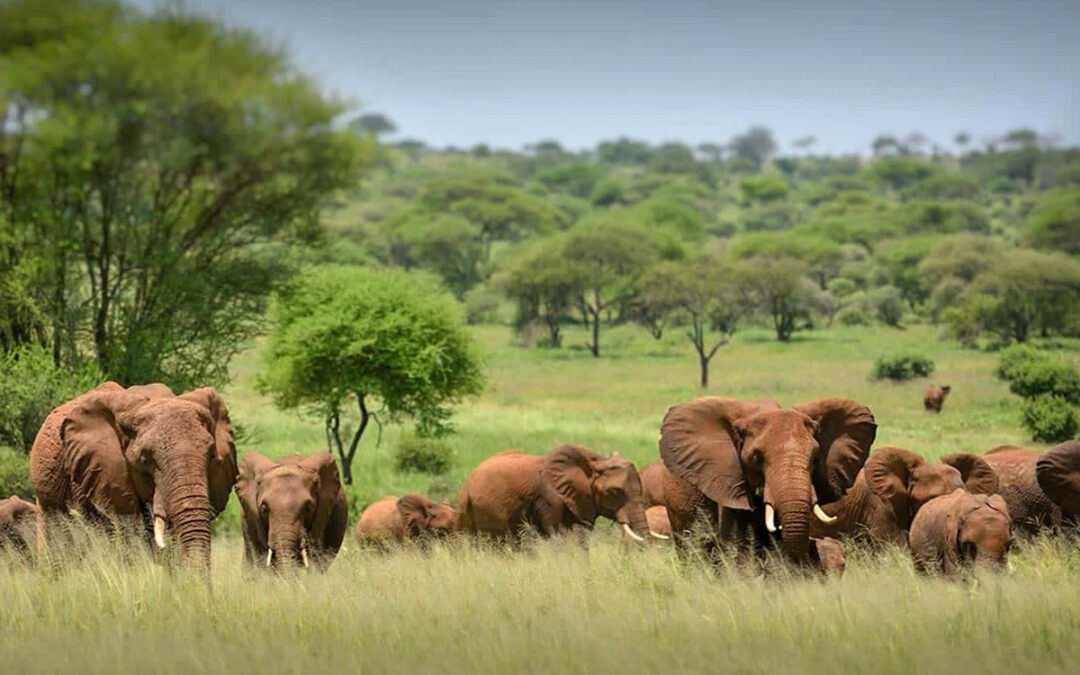Wildlife Conservation Tanzania 2025
Tanzania is home to some of the world’s most iconic wildlife, including lions, elephants, rhinos, and giraffes. With increasing threats such as poaching, habitat destruction, and climate change, protecting Tanzania’s wildlife has become a top priority in 2025. Through advanced technology, stronger policies, and community engagement, the country is making significant progress in safeguarding its rich biodiversity.
Major Threats to Tanzania’s Wildlife
Despite its incredible natural beauty, Tanzania’s wildlife faces several challenges, including:
-
Poaching and Illegal Wildlife Trade – Poaching remains a serious issue, especially for elephants and rhinos, due to the high demand for ivory and horn.
-
Habitat Destruction and Human-Wildlife Conflict – As human populations grow, more land is being used for agriculture, reducing natural habitats for animals.
-
Climate Change – Rising temperatures and changing rainfall patterns affect water sources and food availability for wildlife.
Key Conservation Strategies in 2025
To tackle these threats, Tanzania has implemented several conservation initiatives:
Strengthening Anti-Poaching Laws
-
Harsher penalties for poachers and wildlife traffickers.
-
Increased law enforcement presence in national parks.
Expanding Protected Areas and National Parks
-
Establishment of new wildlife reserves.
-
Connecting ecosystems through protected corridors.
Community-Based Conservation Initiatives
-
Encouraging local communities to protect wildlife.
-
Supporting eco-friendly farming and tourism projects.
Role of Technology in Wildlife Protection
In 2025, Tanzania has embraced cutting-edge technology to monitor and protect its wildlife:
-
Drones and Satellite Tracking – Used to patrol vast areas and detect illegal activities.
-
AI-Powered Monitoring Systems – Helps analyze animal movements and detect poaching threats.
-
GPS Collars for Endangered Species – Tracks animal behavior and migration patterns.
Government Policies and International Partnerships
Tanzania’s government has strengthened its wildlife protection efforts by:
-
Implementing Stricter Wildlife Protection Laws – Increased penalties for poaching and habitat destruction.
-
Collaborating with Global Conservation Organizations – Working with groups like WWF, African Wildlife Foundation, and UNESCO.
-
Developing Eco-Tourism Initiatives – Using tourism revenue to support conservation programs.
Reintroduction and Breeding Programs
To restore declining populations, Tanzania has introduced:
-
White Rhino Reintroduction in Serengeti – A major success in 2025, helping rebuild rhino populations.
-
Breeding Programs for Endangered Species – Focused on elephants, wild dogs, and cheetahs.
-
Wildlife Rehabilitation Centers – Treating and reintroducing injured animals into the wild.
The Role of Local Communities in Conservation
Local communities play a crucial role in Tanzania’s wildlife protection efforts:
-
Wildlife-Friendly Farming Practices – Reducing conflicts between farmers and wild animals.
-
Education Programs and Conservation Awareness – Teaching future generations the importance of protecting nature.
-
Using Indigenous Knowledge – Traditional tracking and coexistence methods help in wildlife conservation.
Sustainable Tourism and Its Impact on Conservation
Tourism is a key driver of Tanzania’s economy, and when done responsibly, it greatly benefits wildlife conservation.
How Responsible Tourism Helps
-
Funds national parks and conservation projects.
-
Creates jobs that encourage locals to protect wildlife.
-
Promotes ethical and non-invasive wildlife experiences.
Best Eco-Tourism Destinations in Tanzania
-
Serengeti National Park
-
Ngorongoro Conservation Area
-
Ruaha National Park
-
Selous Game Reserve
Guidelines for Ethical Wildlife Tourism
-
Choose eco-friendly lodges and tour operators.
-
Avoid buying products made from animal parts.
-
Follow park rules and respect animal habitats.
Challenges and Future Goals for Conservation
Even with these efforts, conservation in Tanzania faces ongoing challenges:
-
Poachers finding new tactics to avoid detection.
-
Climate change affecting wildlife migration patterns.
-
Limited funding for long-term conservation projects.
However, the country remains committed to its conservation goals, with plans to:
-
Expand anti-poaching patrols.
-
Strengthen laws against illegal logging and land encroachment.
-
Increase community-led conservation projects.
In 2025, Tanzania is leading the way in wildlife conservation through stronger laws, advanced technology, and community involvement. While challenges remain, the progress being made offers hope for the future of Africa’s incredible wildlife. By supporting conservation initiatives, tourists and global citizens can help ensure these animals thrive for generations to come.
FAQs
1. What animals are most at risk in Tanzania?
Elephants, rhinos, wild dogs, and some big cat species remain vulnerable due to poaching and habitat loss.
2. How can tourists support conservation efforts?
By visiting national parks, choosing ethical tour operators, and donating to wildlife organizations.
3. What is Tanzania doing to stop poaching?
They have implemented tougher anti-poaching laws, improved law enforcement, and adopted new technologies like drones and AI monitoring.
4. How does technology help protect wildlife?
Drones, GPS tracking, and AI monitoring help track animals and detect poaching activities in real-time.
5. How can I contribute to Tanzania’s conservation programs?
You can support conservation by donating to wildlife charities, volunteering, or participating in eco-tourism.
Explore Tanzania’s Best Safari Destinations:
Begin your unforgettable journey now!


